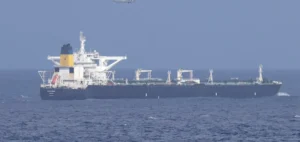Denmark has recovered a cylindrical object spotted near the sabotaged Nord Stream 2 gas pipeline that turns out to be a smoke buoy, its Energy Agency announced Wednesday.
“The recovery was carried out with the participation of a representative of the owner company Nord Stream 2 AG,” in which Russia’s Gazprom is the majority shareholder, the agency said in a statement.
The operation, carried out under the leadership of the Danish Defense Department at a depth of 73 meters, was completed on March 28. “Investigations indicate that the object is an empty smoke buoy used for visual marking,” the statement said.
The discovery of this object, spotted by Gazprom and which does not present any security risk, was revealed by Vladimir Putin himself two weeks ago, the Russian president mentioning a possible role in the sabotage. “Specialists believe that it may be an antenna to receive a signal to activate an explosive device, which could be placed in this (part) of the pipeline,” the Russian head of state had said to the television channel Russia 24.
Nearly six months after the explosions that hit the Nord Stream 1 and 2 gas pipelines, the responsibility for the underwater attack remains a mystery despite criminal investigations in the countries of the region (Germany, Sweden and Denmark).
At the beginning of March, Germany announced that it was investigating a ship suspected of having brought the explosives to the site, without yet being able to draw any conclusions about the identity of the perpetrators. A “pro-Ukrainian group” would be behind the sabotage, the New York Times said in early March, based on information consulted by U.S. intelligence, but without the involvement of Ukrainian President Volodymyr Zelensky.






















